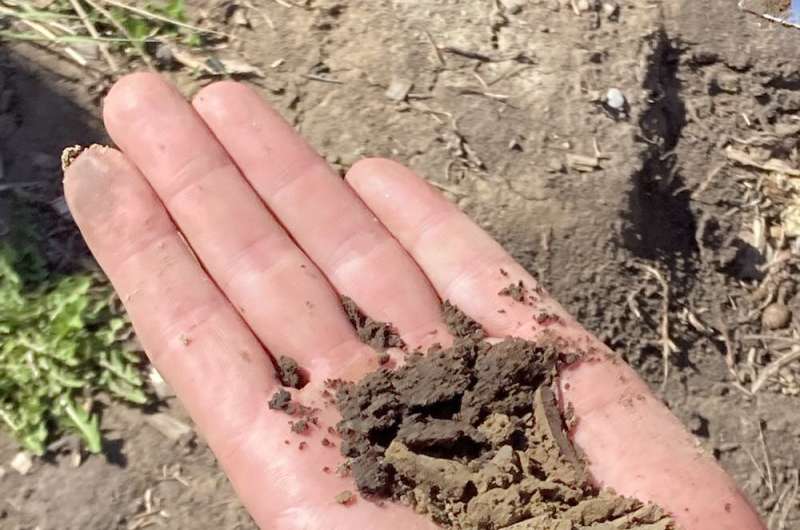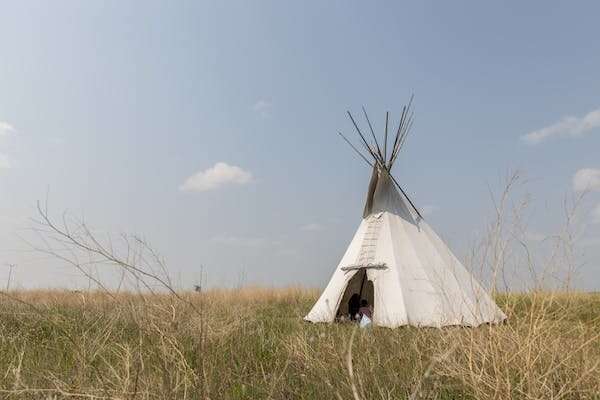This article has been reviewed according to Science X's editorial process and policies. Editors have highlighted the following attributes while ensuring the content's credibility:
fact-checked
trusted source
written by researcher(s)
proofread
What listening to the soil can tell us about our relationship with the land

How often do you think about the soil beneath our feet? We humans rely on the soil to provide us with a stable supply of food, clean water and clean air. Soils have lived histories and stories to tell. They are alive. Soil exists as a varied continuum across Earth's surface reflecting the intersection of air, water, rock and life linked by the passage of time.
The soil can tell stories of their past to anyone who takes the time to listen. Yet despite our reliance on soil, humans entrenched in colonial mindset and systems have been poor soil stewards and generally ignorant to the destructive and extractive practices we inflict on soil.
If we do not listen to the stories of the soil, we as humans might destroy the soil which supports countless lives. Only by understanding our past and current relationship with soil can we reflect and change our partnership with soil from extraction and exploitation to respect, relationality and reciprocity.
Whether we know it or not, soils are the silent partner that sustains us. In the years and decades to come, what will our lasting legacy be in the story the soil tells?
Impacts of human activity
Over the past three years, we have worked with our community partner, Land of Dreams, a 30-acre community urban farm in southeast Calgary. The region has traditionally been stewarded by the Niitsitapi, Îethka Nakoda and Tsuut'ina Nations, and more recently Métis Nation Region 3.
The vision of Land of Dreams is to create a place where communities who are forcefully displaced from their land gather and reconnect to the soil through small-scale agricultural practices, while learning about Indigenous ways of stewarding the land. Our goal is to use STEM education to press for social justice and environmental protection.
Enacting this vision requires using Indigenous knowledge to carefully listen to the stories the soil reveals.
Digging deeper into this land, we encounter various faces of the soil shaped by climate, topography, parent material and time.
The Prairie Pothole region, where Land of Dreams is located, is typified by a mosaic of grasslands and wetlands.

Before European colonization, Indigenous communities had long histories of stewarding the land and living reciprocally with the soil.
We try to imagine, from the soil's point of view, how detrimental the impacts of human activity have been. Until 2009, the soil experienced the cycle of harvest which involved the disruptive effects of annual soil tillage, vehicle traffic and the application of biocides for plants and animals deemed pests.
In 2010, the soil's life-rich surface was stripped away and it was then pressed for the construction of a highway. This caused soil compaction, where the soil pores are pressed together and the soil becomes more rock-like. In this single event, human activity undid the thousands of years it took for the soil to be a space where life could thrive in harmony with the local climate.
Repairing our relationship with the soil
However, this is not the end of the soil's story. Despite compaction causing the soil's surface to become dry and dusty, some plants still grow. Ironically, plants such as dandelions and thistles that were carried here alongside European colonization also thrive on the soil impacted by colonial legacy.
Our observations show how some of the pasture soil continues to act as a refuge of native plants and animals, patiently watching the dandelions and thistles and waiting for a time when the compacted soil will be able to welcome them back.
Despite years of being forced into agricultural production, the soil of the nearby wetland quickly resumes its place as a home and provider to countless insects, birds, frogs, plants and mammals when left to be itself.
Over time the compacted soil will recover, but it will never be the same. It will carry the stories of disturbance and compaction, and of resilience and recovery.
As we envisage our future relationships with the soil, we should let the land guide us. We should listen to the soil as our teacher and relative. Despite the central role that soils play in the ecosystem and our food security, school curricula do not fully teach young minds about the soil. We run the Soil Camp, an educational project that explores what more soil-centric relationships could look like in action.
The next time you are walking on a sidewalk, a well-used trail in an urban park or your backyard, take a moment to think about the land and soil. Imagine what it was like five, 50 or 5,000 years ago. What or who has impacted and changed it? Is the soil still connected with its surrounding natural habitat? Asking these questions can help us take action to be a better partner to the soil beneath our feet.
Provided by The Conversation
This article is republished from The Conversation under a Creative Commons license. Read the original article.![]()




















